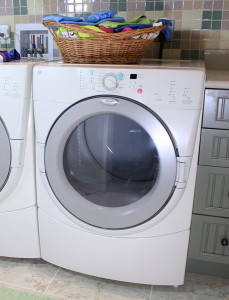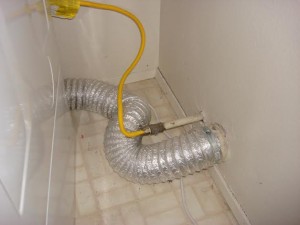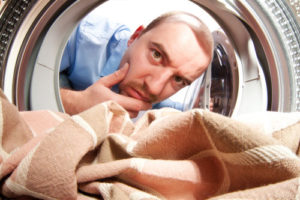 A dryer fire is much more common than you think. The National Fire Protection Association found that from 2010-2014, U.S. fire departments estimated 15,970 fires involving washers and dryers, resulted in 13 deaths, 440 injuries and $238 million in property damage. Out of all those fires, 92% were due to dryer fires.
A dryer fire is much more common than you think. The National Fire Protection Association found that from 2010-2014, U.S. fire departments estimated 15,970 fires involving washers and dryers, resulted in 13 deaths, 440 injuries and $238 million in property damage. Out of all those fires, 92% were due to dryer fires.
According to the U.S. Consumer Product Safety Commission, the second most dangerous appliance in the home is the clothes dryer. The first most dangerous appliance is the kitchen stove. In most homes, the clothes dryer is used far more often than the stove.
As one of the few women Certified Dryer Exhaust Technicians in California, I speak to many people about their dryers. On average, I receive 2-3 calls a month from people who have experienced a terrifying dryer fire.
Simple, easy-to-do tips you can do to prevent a dryer fire
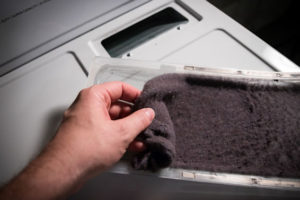 • Clean out the lint screen after every load of laundry.
• Clean out the lint screen after every load of laundry.
• Never use your dryer without a lint screen.
• Always check pockets before doing your laundry. Paper products like Kleenex, cocktail napkins, shopping lists, and receipts get past the lint screen and land inside the dryer along with lint which creates the fuel for a dryer fire. These products also clog the dryer vent which makes the dryer run hotter, setting yourself up for a dangerous dryer fire.
• If you use fabric softener in your washer or dryer sheets in the dryer, we recommend washing the lint screen every few months, using water, liquid soap, and a toothbrush. Fabric softener and dryer sheets leave a chemical film that clogs the lint screen, causing your dryer to overheat.
• Don’t overload your dryer. This can also cause the dryer to overheat, potentially causing a dryer fire.
• If your dryer is located in a laundry room or laundry closet, the doors to the room or closet must be open when the dryer is on. A dryer needs 100 square inches of oxygen, the equivalent of a 10″ x 10″ window. If the dryer doesn’t have this make-up air, it can overheat.
• If you have an exhaust fan in your laundry room, keep it off while the dryer is running, especially if the laundry room or laundry closet doors are closed. The exhaust fan removes air from the room. The dryer needs that oxygen in order to ventilate properly.
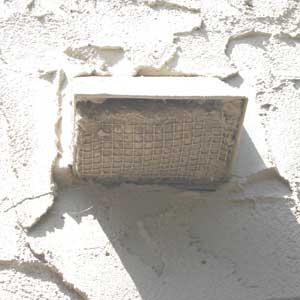 • Never have a screen where the dryer vent exhausts out. The screen will prevent animals from entering the dryer vent but the screen plugs up easily with lint. Instead, use a dryer damper or flapper.
• Never have a screen where the dryer vent exhausts out. The screen will prevent animals from entering the dryer vent but the screen plugs up easily with lint. Instead, use a dryer damper or flapper.
• The dryer needs at least 18″ of clearance in front of it. The dryer pulls air from underneath the dryer. If a laundry basket or other objects are in front of the dryer, it makes it harder for the dryer to pull the air in, causing the dryer to overheat.
• The flexible connector hose between the back of the dryer and the wall must be shiny aluminum, not white plastic or vinyl. Some dryer manufacturers require rigid venting behind the dryer. Check the dryer’s manufacturer’s instructions for the proper transition between the back of the dryer and the wall.
• Don’t push the dryer too close to the wall behind it. This may kink, crush or collapse the flexible connector hose which may prevent the dryer from exhausting properly. This connector hose must be as short as possible and never longer than eight feet. It should only be long enough to go from the back of the dryer to the wall with just a little slack so that it still stays connected if you pull the dryer out. Here’s a link to several options for dryer vent hoses for tight spaces.
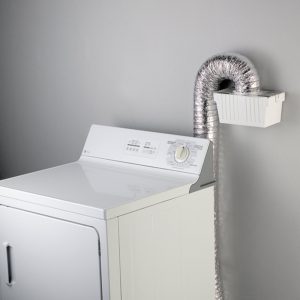
• Building code requires that the dryer vent to the outside of the house. Indoor dryer vent kits do not meet that requirement and could create a potentially dangerous situation, especially for venting a gas dryer.
• Dryer vents cannot vent into garages, attics, basements or crawl spaces. For every load of clothes you dry, the dryer vents a half of a gallon in condensation, creating a sauna in the room. This moisture can create mold in enclosed areas.
• The dryer vent going into or through any enclosed area (garages, attics, basements or crawl spaces) must be the rigid dryer vent pipe. The flexible connector hose can only be used for the short distance between the back of the dryer and the wall, never inside an enclosed area.
• A plugged up dryer vent will prevent carbon monoxide from venting to the outside. It will also overheat the dryer. Here are signs that you may have a plugged up dryer vent.
• Always have an ABC-type of fire extinguisher close to or inside the laundry room in case of a dryer fire.
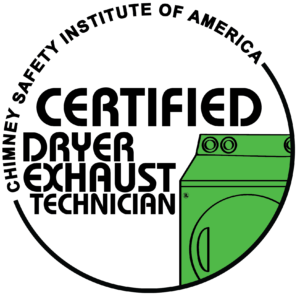 • Have your dryer vent cleaned once a year by a professional Certified Dryer Exhaust Technician. Most people don’t realize that it’s typically chimney sweeps who do dryer vent cleaning. This is because the chimney industry has developed the proper tools and equipment specifically for dryer vents. If the dryer vent is not cleaned correctly, the dryer vent can get disconnected inside the walls or completely plugged up, making for a very expensive repair.
• Have your dryer vent cleaned once a year by a professional Certified Dryer Exhaust Technician. Most people don’t realize that it’s typically chimney sweeps who do dryer vent cleaning. This is because the chimney industry has developed the proper tools and equipment specifically for dryer vents. If the dryer vent is not cleaned correctly, the dryer vent can get disconnected inside the walls or completely plugged up, making for a very expensive repair.
• Make sure to ask how the dryer vent cleaning professional cleans the dryer vent. Professional dryer exhaust technicians will use a brushing method to scrub the dryer vent clean from beginning to end. These brushes have rods that go through the multiple 90 degree bends that most dryer vent systems have. Many companies who are not professional will only use vacuums or air pressure that just remove the loose lint accumulation and not the caked-on, paper-mache’ buildup inside a dryer vent.
• Professional dryer exhaust technicians also have special tools, either a Magnehelic Gage or Vane Anemometer, to measure the airflow of the dryer. After a thorough dryer vent cleaning is done, we test the pressure at the termination. If the system doesn’t have air pressure, then we know that either the dryer needs a repair or there’s a disconnected vent inside the wall. Here’s how to find a professional Certified Dryer Exhaust Technician.
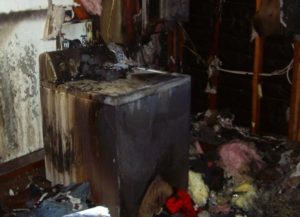 • Cleaning out your dryer vent is only one side of the issue. A dryer fire can also be caused by the clothes dryer itself. The paper and lint accumulation inside the dryer under the drum is typically where the dryer fire occurs. For that reason, hire a professional appliance technician to clean out the inside of the dryer once or twice a year, depending on your laundry habits. Simply cleaning the lint screen isn’t enough because the paper and lint can get past the lint screen and land inside the dryer. The only way to remove that lint is to open up the dryer.
• Cleaning out your dryer vent is only one side of the issue. A dryer fire can also be caused by the clothes dryer itself. The paper and lint accumulation inside the dryer under the drum is typically where the dryer fire occurs. For that reason, hire a professional appliance technician to clean out the inside of the dryer once or twice a year, depending on your laundry habits. Simply cleaning the lint screen isn’t enough because the paper and lint can get past the lint screen and land inside the dryer. The only way to remove that lint is to open up the dryer.
• The most important piece of advice I have: Never go to bed with the dryer on and don’t leave the house either!! You want to be home and you want to be awake in case of a dryer fire. This is especially true when your dryer is located in an attached garage. Building code requires a one-hour fire-rated door between the garage and the house. Your garage would be completely gone before you would even know you had a fire. In this case, it’s especially dangerous if you have a bedroom above the garage.
Cleaning out your dryer vent as well as inside the dryer itself will save you money on utility bills, create less wear and tear on the dryer, reduce expensive appliance repairs and will reduce the chance of a dryer fire.
Proper maintenance of your dryer vent, as well as your dryer, can give you peace of mind from a potential dryer fire.


